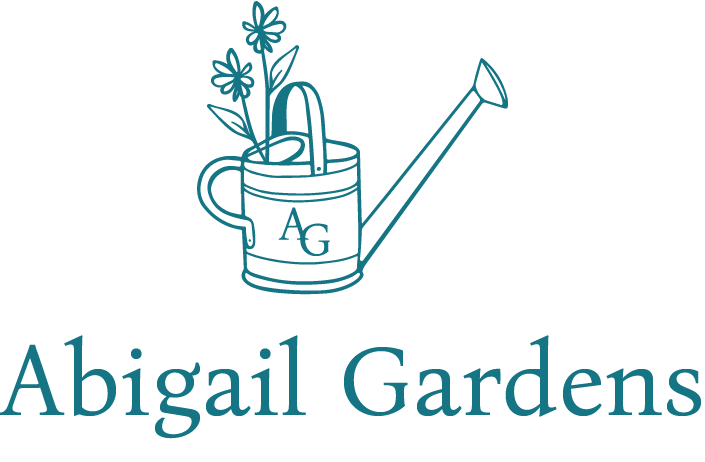What is Companion Planting?
Did you know that certain plants love to be companions in the garden? Not only can they mutually support each other, but they are often beneficial for the soil, manage insects, and can help save space in your precious garden real estate!
So first off, what is a companion plant? You may have heard this phrase tossed around your gardening community, or maybe it is completely new to you! Regardless, it is a great concept to know and implement. Companion planting is the
act of planting two different species close to each other to help either one or both of the plants to grow and thrive.
A beautiful container garden with companion plants intensively planted together. Notice the colors, varying heights, and lack of visible soil!
When you place two plants together, the different root structures can better aerate the soil. This can help the roots pull more nutrients from varying levels of the soil profile. An example of this can be seen with the deep taproots of potatoes. As they burrow down, the taproot helps break up compaction in the soil. A tomato plant on the other hand, may not have a deep taproot but their roots can still dig down deep into the soil and pull up nutrients from further down in the soil profile than a plant with shallow roots, like say lettuce.
A quick note that nitrogen is incredibly important in the soil, and some plants are champions at either pulling it up from deep in the soil and/or fixing it from the atmosphere into a usable form for itself and other plants. Legumes such as clover are great for this (three cheers for white clover! It does not need to be seen as a weed, but rather a living mulch!).
Companion planting has also been practiced throughout history in order to reduce uninvited garden pests and to attract the best, respectful garden visitors, our wonderful pollinators. What you plant and where you plant it can often manage insects in three ways: smells, attracting predators, and visual distraction. Because plants can emit smells to attract or repel insects, you can use them as a trap crop or repellant crop respectively. Sometimes all the different smells and signals coming from the garden are confusing enough to keep unwanted insects from landing! Certain insects are wonderful to encourage in the garden, such as parasitic wasps. These insects help control the unwanted insect populations. We want to encourage them to come to our gardens by providing them good habitat and food. Finally, even just having a good diversity of plants with varying heights and color can provide enough of a visual distraction, making it harder for unwanted insects to know where to land.
So which plants are the best of friends!? Let’s dive in.
A traditional example:
You may have heard of the three sisters.
The three sisters model has been used by many indigenous cultures throughout history, and it incorporates corn, squash, and beans. The corn grows tall, providing a stalk for the beans to climb. These two help provide a visual deterrent from harmful squash bugs while the squash helps deter animals that like to eat sweet corn. Beans while being delicious also fix nitrogen in the soil. A beautiful and thriving relationship!
Flowers as companions:
Planting perennial flowers such as monarda and penstemons and/or herbs like oregano alongside vegetable bed borders help attract those wonderful predator insects and pollinators to your vegetable garden. Annuals can also be used for this purpose, and they may self seed for the next year!
Calendula will repel unwanted pests like whitefly while also attracting beneficial pollinators. These are beautiful, easy to grow, have medicinal properties, and keep flowering throughout the summer.
Calendula planted beside tomato plants.
Nasturtium is the king of trap crops for unwanted pests. If you grow them close to anything in the brassica family (kale, cabbage, etc) it will lure the caterpillars away from your veggies. Did you know the flowers are edible too!? They are spicy and look beautiful in salads or a cocktail.
Nasturtiums while beautiful also help lure away pests from your cabbage.
If you sow a low growing flower with wide leaves, such as marigolds, in between your garden beds, it can help suppress weeds, deter nematodes, and attract beneficials such as bees, butterflies, and hoverflies.
Marigolds planted intensively between rows of lettuce and squash.
Vegetables as companions:
When it comes to veggies, often what tastes good together, grows well together!
Tomatoes and basil: Basil helps deter certain pests like moths that will lay tomato hornworms.
Basil growing beside tomato plants.
Borage grows well with tomatoes and strawberries by attracting pollinators and enhancing flavor.
A lovely little borage amongst some strawberries and mint. Hooray for this natural bed border and the use of mulch!
Garlic has a very strong scent that can help deter pests such as Japanese beetles, ermine moths, and onion flies.
Garlic is planted here throughout the vegetable garden.
Sage planted around carrots helps deter carrot flies, or planted around cabbage, helps deter cabbage moths.
Abundant sage providing some protection to these beautiful cabbages.
This list is not exhaustive by any means! If there is anything I want you to take away from this blog post, it is that more often than not, more plants is always better! Healthy gardens are beautiful gardens, and that means providing good diversity. I hope this helps inspire you for your 2024 gardening season.
Happy growing!
-Lauren Saurs









